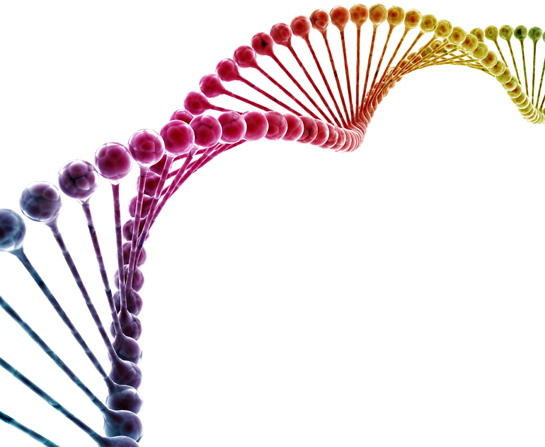Miscarriage is an intensely personal and emotional experience, affecting up to 15.9% of women in Malaysia of reproductive age (15 to 49 years old). While it’s a common occurrence, many of its realities remain shrouded in silence and discomfort. This article sheds light on the difficult, often unspoken truths about miscarriage — insights that can not only help us better support those affected but also improve our understanding of how to reduce the risks where possible.
WORDS ASSOCIATE PROFESSOR DR ANITHA PONNUPILLAI
 FEATURED EXPERT FEATURED EXPERTASSOCIATE PROFESSOR DR ANITHA PONNUPILLAI School of Medicine Faculty of Health and Medical Sciences Taylor’s University |
| This article addresses sensitive topics related to pregnancy loss and miscarriage, which some readers may find distressing. Nonetheless, we encourage you to read on, as these conversations matter — offering understanding, support, and hope to those affected. Please take care while reading. |
Miscarriage is a deeply personal experience that affects many women and their families.
In Malaysia, it’s estimated that 15.9% of women aged 15–49 experience a miscarriage.
Understanding what miscarriage is — and how to navigate life after it — can offer those fearing or have been affected by it to find comfort and hope for the future.
THE NATURE OF MISCARRIAGE
- A miscarriage is the spontaneous loss of a pregnancy before the baby is considered viable, usually before 20 to 28 weeks.
- Most miscarriages (about 75 to 80%) happen in the first 3 months of pregnancy.
- 1 in 4 to 5 pregnancies end in miscarriage, though actual rates may be higher due to unreported early losses.
What Causes Miscarriage?
Many factors contribute to miscarriage. The most common ones are:
Chromosomal abnormalities
These are problems with the baby’s chromosomes due to abnormal development of the father’s sperm or the mother’s egg.
Maternal age
The risk rises significantly when the mother is 35 or older.
- 15.0% when she is between 30 and 34 years old
- 24.6% at 35 to 39
- 51.0% at 40 to 44
- 93.4% at 45 and above
Medical conditions
Examples are diabetes, thyroid disorders, polycystic ovary syndrome (PCOS), and blood-clotting issues.
Lifestyle factors
These include smoking, alcohol, recreational drug use, and obesity.
| Activities like exercise or sexual intercourse during pregnancy do not cause miscarriage. |
SIGNS AND SYMPTOMS TO WATCH OUT FOR
If you’re pregnant, seek medical attention immediately if you experience:
- Vaginal bleeding, from light spotting to heavy flow. Bleeding can last 1 to 2 weeks, with the heaviest flow in the first 2 days. Even mild spotting should be checked.
- Cramping or severe abdominal pain.
TYPES OF MISCARRIAGE
Complete Miscarriage
- All pregnancy tissue is expelled.
- Often needs no further treatment.
Incomplete Miscarriage
- Some pregnancy tissue remains inside the uterus.
Septic Miscarriage
- Retained pregnancy tissue in the womb.
- Such tissue can cause infection, with fever and foul-smelling discharge.
Missed miscarriage
- The baby stops developing such as missing heartbeat or failure to grow, with the mother experiencing no other symptoms of miscarriage.
IS TREATMENT NECESSARY AFTER A MISCARRIAGE?
For a complete miscarriage, often no further treatment is needed.
For other types of miscarriages, the following may be necessary, depending on the nature of the miscarriage.
- Expectant management to allow for natural expulsion of remaining pregnancy tissue.
- Medical management, which involves the use of medications to help clear the womb.
- Surgical treatment may be necessary when there is infection or incomplete miscarriage.
If tissue is passed, it should be collected for lab testing to rule out conditions like a molar or ectopic pregnancy.
AFTER A MISCARRIAGE
Physical Impact
The following may occur, requiring further medical attention.
- Heavy bleeding
- Pain
- Infection
- Trauma to the reproductive organs
- Potential need for repeat surgery
Septic miscarriage may affect the woman’s ability to conceive in the future.
Emotional Impact
- Emotionally, women may experience guilt, shock, anger, and anxiety.
- Some can face depression, post-traumatic stress disorder, or suicidal thoughts.
- Therefore, emotional and mental health support for the woman is crucial.
Follow-Up Care
- Follow-up care is important within 2 weeks to monitor both physical and emotional recovery.
- Ovulation usually resumes within 2 weeks, and menstruation returns in 4-6 weeks.
- It is advisable to wait until normal menstruation resumes before planning future pregnancies.
Support from partners, family, and friends is vital for healing.
Employers should offer compassionate leave options and flexibility for the woman to take time off for recovery and follow-up care.
Sex and Future Pregnancies
- It’s common to feel emotionally and physically unready for intimacy after a miscarriage.
- Avoid vaginal sex until bleeding stops, around 2 weeks.
- Use contraception until one is emotionally and physically ready to conceive again.
- Open, honest communication between partners helps with the healing process.
RECURRENT MISCARRIAGES: WHAT TO KNOW
To improve the likelihood of a successful future pregnancy, couples are encouraged to adopt several preventive strategies. These include:
- Maintain a healthy lifestyle through a balanced diet and regular exercise.
- Avoid smoking, alcohol, and drug use.
- Take folic acid supplements.
- Pre-pregnancy care to ensure any existing medical conditions are well-managed.
- Stress management.
- Adequate sleep.
- Regular antenatal check-ups.
When to Stop Trying After Experiencing Recurrent Miscarriages?
Determining the right time to end attempts to conceive is a deeply personal decision.
If a couple chooses to pursue adoption, it is important that they first address and process their grief to ensure emotional preparedness for the journey of parenting.
| This article is part of our series on facts and advice on matters related to women’s health. |









